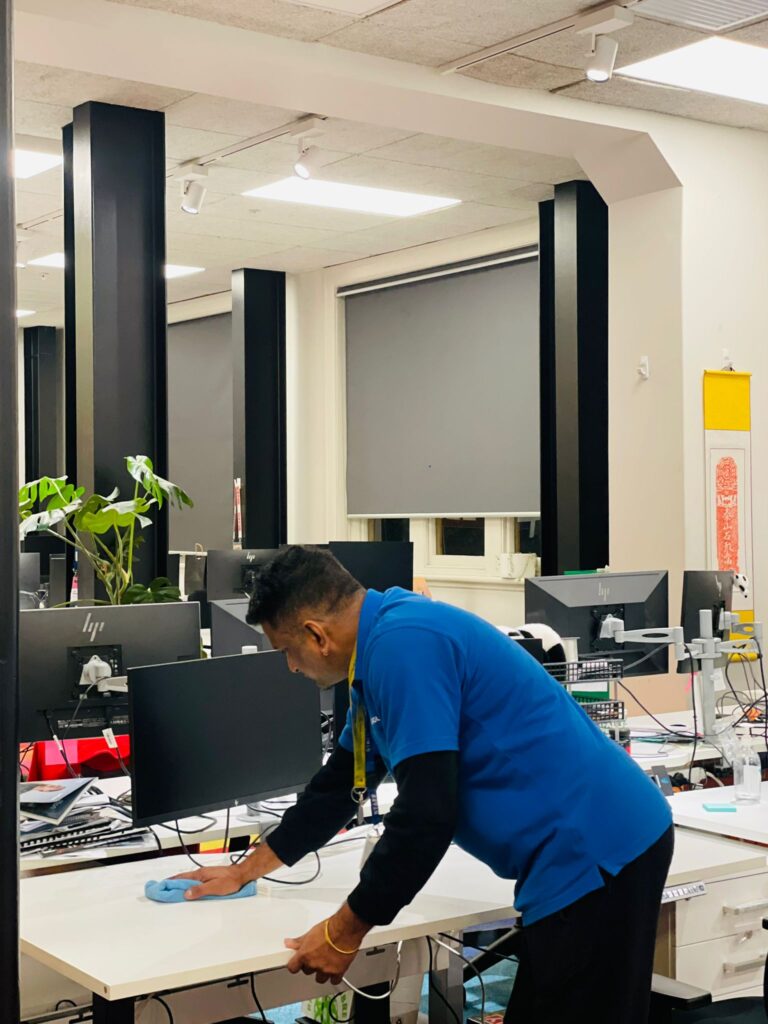When we think about cleaning, it is usually only about surface cleaning – floors, objects, table and other surfaces. However, the air that we breathe is as important as the surfaces and objects that we handle and touch. In our workplaces, on an average, an employee spends 90% or more of their time indoors. It is estimated that poor indoor air quality can cause sickness and this in turn can cost up to billions of dollars per year in lost productivity.
Typically, the dust found in the indoor air contain pollen, lint from carpets & upholstery, mould & fungal spores, paint, dead skin cells, diesel and petrol fumes, dust mites, etc. The two ways that a building’s occupants and also cleaners are exposed to indoor air pollution are via chemicals used in cleaning products and particulates on building surfaces while dusting and vacuuming.
Best ways to tackle indoor air pollution
The best ways that professional cleaning services handle and minimise air pollution in your workplaces are by using cleaning products that contain low or no VOCs, minimising the use of scented products and air-fresheners, by not dispensing chemical mists and aerosols in enclosed spaces, by removing dust effectively from all hard surfaces and by removing mould from porous surfaces.
We can also reduce volatile organic compounds by
- Buying products certified by Eco-labels like Green seal certified products,
- Restricting VOCs to very low levels and by using chemical-free cleaning agents,
- Avoiding air-freshening cleaning / disinfectant products
- Removing odours at the source or via extraction fans
- Reducing chemical mists & aerosols
- Increasing ventilation
- Not using aerosol can sprays
- Avoiding flicking dust around
- Damp dusting by spraying a microfibre or cotton cloth with water or chemical and wipe in one direction
- Removing mould
A professional and environmentally conscious cleaner would ensure that the buildings they handle and their cleaning teams are protected by using these best practices at all times. If you’re looking for reliable, eco-friendly, and professional cleaning solutions, QualGroup is here to help. From office cleaning to specialised services like floor care and tile and grout cleaning, we deliver tailored solutions that put health, safety, and sustainability first.
👉 Book your free site audit with QualGroup today and discover how we can keep your workplace spotless, safe, and shining.



